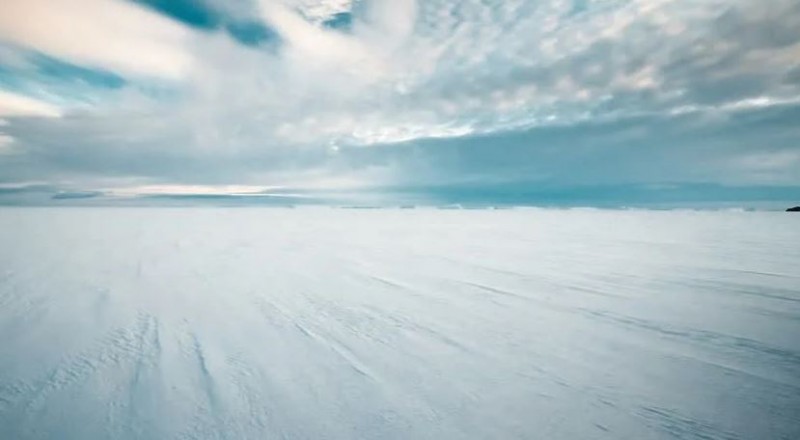
The vast and mysterious landscapes of our planet have always fascinated humans, and among these remarkable wonders is the Antarctic Desert. Although many might picture a desert as a hot and arid place, the Antarctic Desert is far from such expectations. In this article, we will delve into the unique characteristics of the world's largest desert, which is also the coldest and windiest place on Earth.
Defining the Antarctic Desert:
The Antarctic Desert is a polar desert located around the Earth's South Pole, covering an area of approximately 5.5 million square miles. Despite its icy appearance, it falls under the classification of a desert due to its extremely low precipitation levels. The term "desert" refers not only to hot, sandy regions but also to cold, arid landscapes like Antarctica.
Climate and Weather:
The Coldest Place on Earth:
Antarctica holds the record for being the coldest place on Earth. In fact, the lowest temperature ever recorded on our planet was a bone-chilling -128.6 degrees Fahrenheit (-89.2 degrees Celsius) at the Soviet Union's Vostok Station in 1983. The continent experiences frigid temperatures throughout the year, with winter temperatures often plunging even lower.
Windiest Place on Earth:
Apart from its freezing temperatures, the Antarctic Desert is renowned for its powerful winds. These winds, known as katabatic winds, blow from the interior of the continent towards the coast, gaining speed as they descend from higher elevations. These extreme winds can reach staggering speeds of up to 200 miles per hour (322 kilometers per hour) in certain areas, making it the windiest place on Earth.
Geographical Features:
The Antarctic Desert boasts breathtaking landscapes, including vast ice sheets, glaciers, icebergs, and towering mountain ranges. One of its most remarkable features is the East Antarctic Ice Sheet, covering a staggering 5.4 million square miles, making it the largest single mass of ice on Earth.
Flora and Fauna:
Contrary to what some might assume, the Antarctic Desert is not completely devoid of life. Various forms of wildlife have adapted to survive in this extreme environment. Iconic species such as penguins, seals, and seabirds thrive in the coastal regions, relying on the nutrient-rich marine life in the surrounding waters.
Scientific Research in the Antarctic Desert:
Antarctica plays a crucial role in scientific research due to its isolated and pristine environment. Several research stations operated by different countries facilitate a wide range of studies, from climate change research to astrophysics and microbiology. Scientists from around the globe are drawn to this unique laboratory to unravel the secrets of our planet and the universe.
Polar Research Stations:
Research stations like the Amundsen-Scott South Pole Station and McMurdo Station provide a base for scientists to conduct groundbreaking experiments and observations.
Climate Change Studies:
Antarctica serves as a vital component in climate change studies. The ice cores extracted from its ice sheets offer a historical record of the Earth's climate, aiding researchers in understanding past climate variations and predicting future trends.
Environmental Concerns and Conservation Efforts:
Despite its remote location, the Antarctic Desert is not immune to human impacts. Climate change and increasing human activity in the region pose significant threats to its delicate ecosystem. International agreements and conservation efforts strive to protect this pristine environment and its inhabitants from further harm.
Tourism in the Antarctic Desert:
As fascination with Antarctica grows, so does tourism to this remote continent. Adventure-seekers and nature enthusiasts embark on cruises to witness its awe-inspiring beauty. However, this rise in tourism raises concerns about the potential negative effects on the environment. Strict regulations are in place to ensure that visitors leave minimal impact on this delicate ecosystem.
Antarctica and Global Significance:
Antarctica's influence extends beyond its icy boundaries. The continent plays a crucial role in regulating the Earth's climate and ocean currents. Its preservation is not only vital for the diverse wildlife that calls it home but also for the entire planet's ecological balance.
The Antarctic Desert, the world's largest desert, stands as a testament to the planet's diverse and extreme environments. Its freezing temperatures, powerful winds, and awe-inspiring landscapes make it a unique and captivating destination for scientific research and tourism alike. As we continue to explore and study this pristine wilderness, it becomes evident how essential it is to protect and preserve this delicate ecosystem for future generations.
Havelock Island: The Largest Island of Ritchie’s Archipelago
Discovering Paris: Top 7 Must-Visit Places in the City of Lights